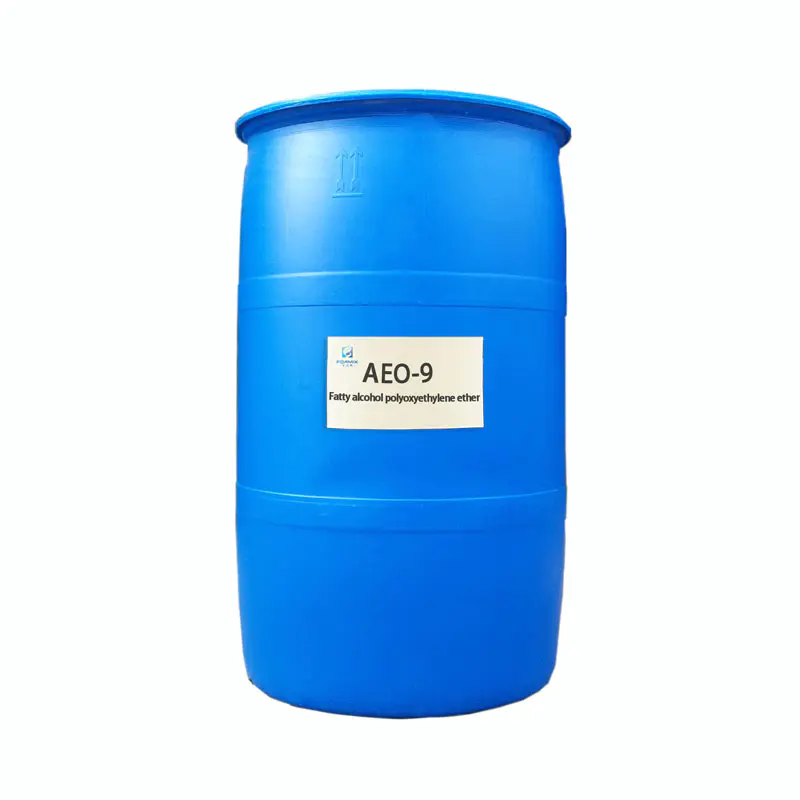What is Lauryl Alcohol Ethoxylate AEO-9 and How Does It Work?
2025-01-10
In the world of surfactants, Lauryl Alcohol Ethoxylate AEO-9 stands out as a versatile and highly effective chemical compound. Used across a variety of industries, from detergents to cosmetics, AEO-9 is known for its excellent emulsifying, wetting, and cleansing properties. This surfactant is part of a larger group of ethoxylated alcohols, which have been optimized for performance in both consumer and industrial products.
In this blog, we will dive into what Lauryl Alcohol Ethoxylate AEO-9 is, how it is produced, its key features, and its numerous applications.
What is Lauryl Alcohol Ethoxylate AEO-9?
Lauryl Alcohol Ethoxylate AEO-9 is a non-ionic surfactant made by ethoxylating lauryl alcohol (a fatty alcohol derived from coconut or palm kernel oil) with ethylene oxide. The "AEO-9" refers to the ethoxylation degree, meaning that Lauryl Alcohol has been reacted with 9 molecules of ethylene oxide.
The resulting compound is a water-soluble, mild surfactant that possesses a number of desirable qualities, such as the ability to reduce surface tension, enhance solubility, and improve wetting properties. AEO-9 can effectively emulsify oils, disperse solids, and cleanse surfaces, making it invaluable in various formulations.
How is Lauryl Alcohol Ethoxylate AEO-9 Made?
The production of Lauryl Alcohol Ethoxylate AEO-9 typically involves two key processes:
1. Hydrogenation of Lauryl Alcohol
Lauryl alcohol is derived from natural fatty acids, typically obtained from coconut or palm kernel oil. The alcohol undergoes hydrogenation to create a saturated, straight-chain alcohol that is highly stable and suitable for further chemical reactions.
2. Ethoxylation
The lauryl alcohol is then reacted with ethylene oxide under controlled conditions (temperature and pressure). This process adds a number of ethylene oxide units (in this case, 9) to the alcohol, modifying its hydrophilic (water-attracting) properties while maintaining its lipophilic (oil-attracting) characteristics. The result is a surfactant with unique properties, making it more effective in a variety of cleaning and emulsifying applications.
Properties of Lauryl Alcohol Ethoxylate AEO-9
- Non-Ionic Surfactant
As a non-ionic surfactant, AEO-9 doesn’t carry an electrical charge, making it less sensitive to the presence of salts and other electrolytes in solution. This property allows it to be used in a wide range of formulations without causing unwanted interactions.
- Mildness
Lauryl Alcohol Ethoxylate AEO-9 is generally considered to be mild, making it suitable for use in personal care products, such as shampoos, body washes, and facial cleansers. It is less irritating to the skin and eyes compared to more aggressive surfactants, which is why it's preferred in formulations designed for sensitive skin.
- Solubility and Wetting
The surfactant has excellent solubility in both water and oil, enabling it to act as an emulsifier that blends ingredients that normally wouldn’t mix. Additionally, its wetting properties help it spread evenly over surfaces, improving cleaning performance.
- Low Foam Formation
AEO-9 produces low foaming compared to other surfactants, which is particularly beneficial in industrial applications where excessive foam could be problematic, such as in dishwashing detergents or industrial cleaners.
Applications of Lauryl Alcohol Ethoxylate AEO-9
1. Household and Industrial Cleaning Products
Lauryl Alcohol Ethoxylate AEO-9 is a popular ingredient in many cleaning products due to its effective degreasing and emulsifying properties. It is commonly used in dishwashing liquids, all-purpose cleaners, and laundry detergents, where it helps remove grease, dirt, and oils.
2. Personal Care Products
AEO-9 is commonly found in shampoos, body washes, facial cleansers, and toothpaste formulations. Its mildness ensures that it cleanses effectively while being gentle on the skin and hair. It also helps improve the texture and stability of these products.
3. Emulsifiers in Food and Pharmaceuticals
The ability of Lauryl Alcohol Ethoxylate AEO-9 to emulsify oils and water makes it useful in the preparation of emulsions in foods, cosmetics, and pharmaceuticals. It is often used in the production of creams, lotions, and ointments.
4. Agricultural Applications
In agriculture, AEO-9 is used in pesticide formulations, helping to emulsify and disperse active ingredients for better coverage and effectiveness. It can also be found in adjuvants and other crop protection products.
5. Oil Field Chemicals
Lauryl Alcohol Ethoxylate AEO-9 is utilized in oilfield applications, where it helps improve the flow of fluids and enhances oil recovery processes by lowering the surface tension between oil and water.
Lauryl Alcohol Ethoxylate AEO-9 is a highly versatile and effective surfactant with a broad range of applications across various industries. Its ability to emulsify, wet, and clean makes it an invaluable component in cleaning products, personal care formulations, industrial applications, and more. The non-ionic nature and mildness of this surfactant make it especially popular in products designed for sensitive applications like skin care. As industries continue to prioritize sustainability and innovation, Lauryl Alcohol Ethoxylate AEO-9 will undoubtedly remain a key ingredient in many formulations.



